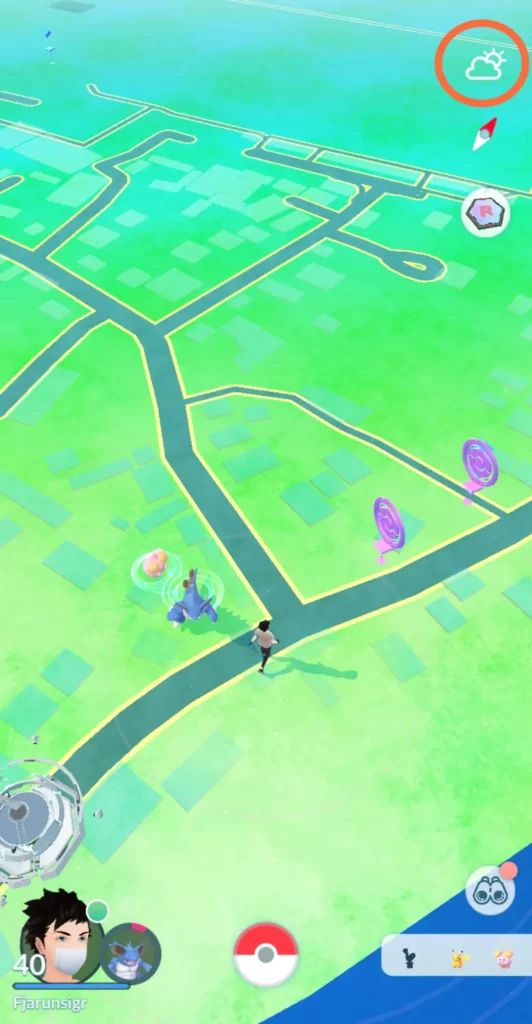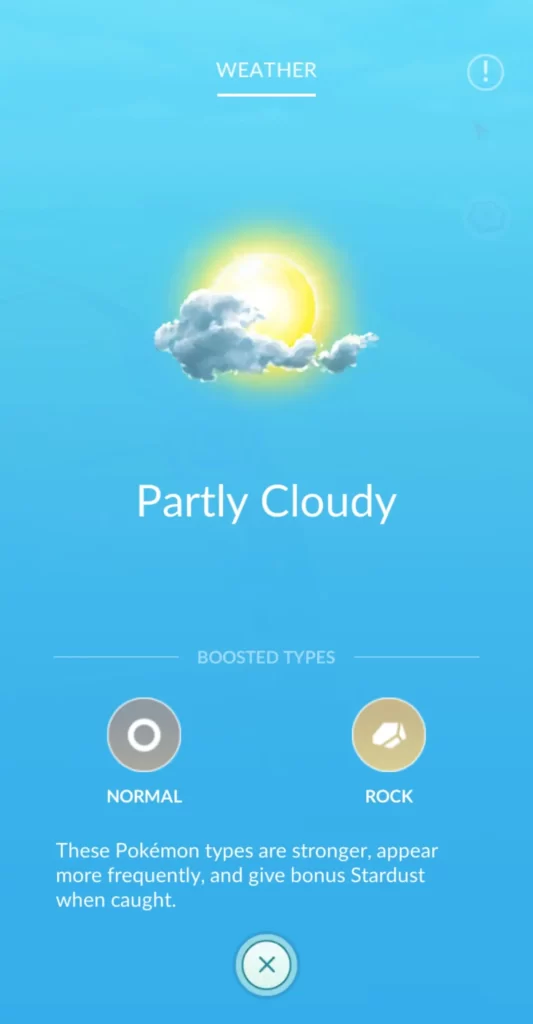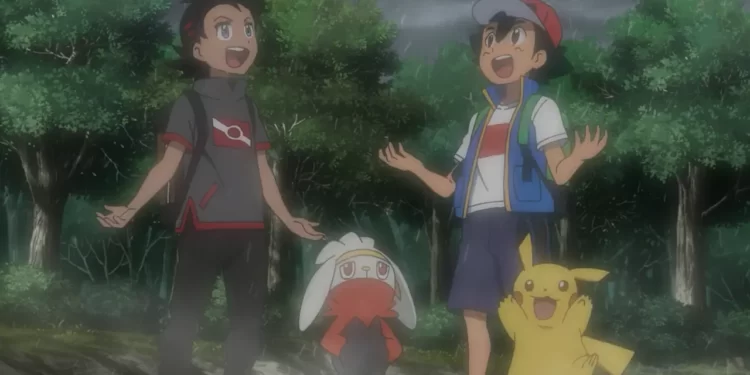Weather in Pokemon Go has a significant effect on wild Pokemon and their strength, so how to check the weather for boosts is worth knowing.
What Does Weather Boost Do in Pokemon Go
Weather boosts in Pokemon Go are precisely what they sound like. They’re statistical upgrades to Pokemon that are caught during specific weather conditions. For example, water types are big fans of the rain weather effect and will have a weather boost on them during that type of weather.
The boost itself will actually mean that the wild Pokemon near you that you encounter will be of a higher CP level, which is a good way to save candy for leveling them, as you can skip a significant candy investment by capturing them during this effect.
This bonus is particularly well worth noting in the case of legendary and mythical raid boss Pokemon. It means that the fight you’ll endure will be a noticeable amount more difficult, but at the same time, the captured Pokemon at the end of the battle will come with several hundred higher CP.
Ultimately capturing these rare Pokemon will mean doing much less farming of their raids to gain the necessary candy to level it up, as it’ll start much stronger than it otherwise would be.
It is effectively always worth doing weather boosted rads instead of non-boosted raids for this value alone if you can manage the extra difficulty involved – and if not, perhaps consider swapping to a different team and organising a raid group to help out.

On top of those bonuses, Weather boost plays a role in battles too. All attacks of a boosted Pokemon Type will benefit, dealing +20% damage. Furthermore, wild Pokemon under the effect will have a minimum IV value of 5 in all stats, effectively eliminating the weakest Pokemon from the capture pool with the relevant weather in effect.
Finally, any Pokemon captured during a weather boost will reward additional stardust compared to the usual rates. While not a colossal amount, it does award +25% on top of whatever you would have gained from the capture normally.
This is quite small individually but makes for a good way to help build up stardust over time, because we all know that that can be a struggle to farm for in Pokemon Go, particularly with how quickly it can be consumed.
All Weather Conditions and Boosted Pokemon Types for Each
Each Pokemon type has at least one weather boost, with Grass, Fire and Ground types benefitting from both Sunny and Clear weather conditions. The full list can be seen here:
| Weather Conditions | Boosted Types |
| Sunny/Clear | Grass, Fire, Ground |
| Rainy | Water, Electric, Bug |
| Partly cloudy | Normal, Rock |
| Cloudy | Fairy, Fighting, Poison |
| Windy | Flying, Dragon, Psychic |
| Snow | Ice, Steel |
| Fog | Dark, Ghost |
The system is a bit unfair to the likes of Ice, Steel, Dark and Ghost Type Pokemon who will rarely ever see their boosted weather in most regions, but it’s quite easy to find weather boosted Pokemon for the majority of the weather conditions present in Pokemon Go.
If these rarer weather conditions had the advantage of causing most if not entirely their respective boosted types to spawn, that would solve that issue quite nicely I believe, but at the moment this doesn’t seem to be the case – particularly with how often the wild Pokemon spawns are dominated by featured events.
How to Check the Current in-game Weather
If you can’t tell what the weather is currently from the Pokemon Go overworld map, luckily there’s a screen dedicated to precisely this purpose, and it’ll list currently boosted types too as a bonus.
To open the weather screen, tap on the button show highlighted with an orange circle below.

When done successfully, this should take you to a screen that looks a bit like this one below, depending of course on what the weather is for you in-game at the time. If it’s raining near you, you shouldn’t expect to see the partly cloudy icon that shows for me here, for example.

The in-game weather is known to be mostly accurate but does have its moments where it struggles to keep up with reality. As such, please do not use Pokemon Go’s weather screen as an indicator of the weather outside for you, because it does definitely have times where it’s off.
It also doesn’t really account for extreme weather events or the like, so “windy” can (and has previously) translated to “there’s a literal tornado outside” – It’s not entirely wrong in that case, but “windy” doesn’t quite summarise what to expect as well as it should.
So what can you do when Pokemon Go has one of these wildly inaccurate moments with its weather system? Tap on the exclamation mark icon in the top left corner to report it as outright wrong or Inaccurate – enough reports by different players will force the game to recheck its current weather data for that area.

